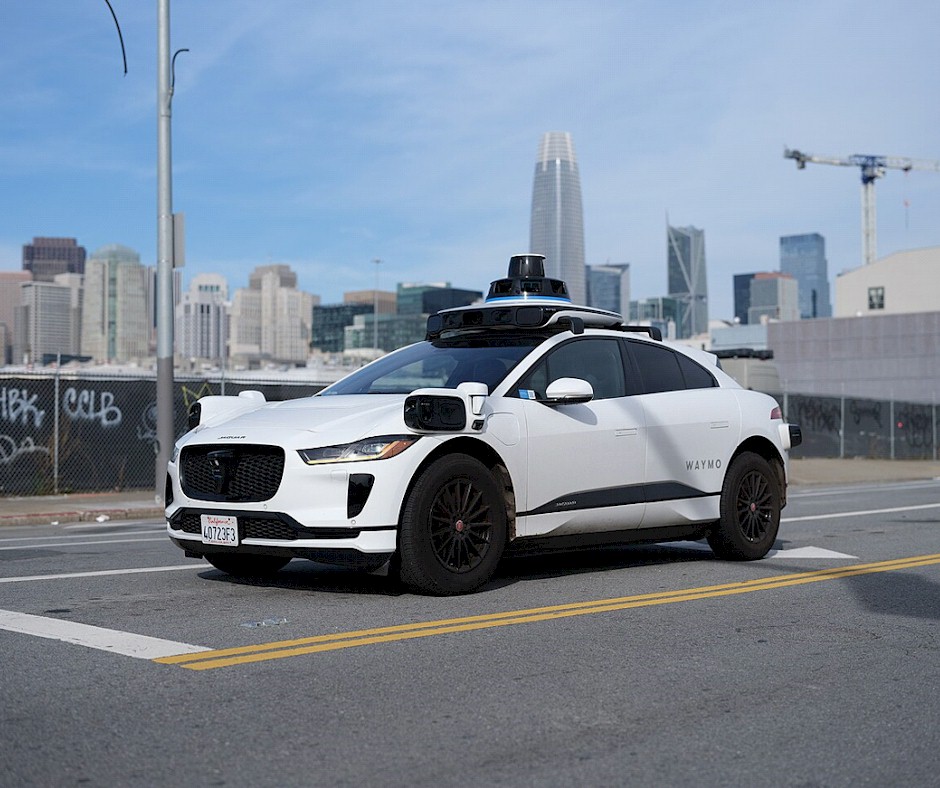SGS Blog
Are We Here Yet?

Autonomous Vehicles: Revolutionizing Senior Mobility in the South
Introduction: As a graduate student in the Southern Gerontological Society program, I'm deeply interested in the challenges and opportunities facing our region's aging population. One critical area is senior mobility. Many older adults, particularly those living in rural areas or with declining physical abilities, face limitations in getting around. This can lead to social isolation, decreased access to healthcare, and a decline in overall well-being.
This is where the burgeoning technology of autonomous vehicles (AVs) presents a fascinating potential solution. These self-driving cars hold the promise of revolutionizing senior mobility, offering independence, safety, and improved access to vital services.
In this blog, we'll explore the specific challenges faced by older adults in the South, the potential benefits of AVs, and some of the considerations for integrating this technology into our communities.
The Southern Challenge: Unique Considerations
The South presents unique challenges for senior mobility. Factors like:
- Sprawling rural communities: Public transportation options are often limited in rural areas, leaving many seniors reliant on private vehicles.
- Hot climates: Walking and cycling can be challenging in the South's hot summers, further restricting mobility options.
- Limited access to technology: Some older adults may not be comfortable using technology to hail or interact with AVs.
These factors combine to create a situation where seniors are particularly vulnerable to mobility limitations.
Autonomous Vehicles: A Potential Game Changer
AVs offer a glimmer of hope. Imagine a world where seniors can:
- Maintain independence: AVs could allow seniors to travel to grocery stores, doctor appointments, and social events without relying on others.
- Improve safety: AVs can react faster than human drivers, potentially reducing car accidents involving seniors.
- Increase access to services: On-demand AVs could connect seniors to vital services in their communities, like healthcare and social programs.
- Enhance quality of life: Improved mobility can lead to increased social interaction, reduced isolation, and a greater sense of well-being.
However, there are also challenges to consider.
Navigating the Road Ahead: Considerations for Implementation
While AV technology holds immense promise, several considerations need to be addressed before widespread adoption:
- Safety Concerns: Ensuring the safety and reliability of AVs is paramount, especially for a vulnerable population like seniors.
- Technology Adoption: Integrating user-friendly interfaces and addressing potential technology gaps among the senior population is crucial.
- Regulation and Infrastructure: Developing clear regulations and adapting infrastructure for AVs will require collaboration among policymakers, technology developers, and transportation authorities.
- Social and Ethical Concerns: Questions of data privacy, accessibility for people with disabilities, and the potential impact on public transportation need to be addressed.
Conclusion
The intersection of autonomous vehicles and senior mobility in the South is a complex but exciting area. While challenges exist, the potential benefits for our aging population are undeniable. By working together, gerontologists, technologists, policymakers, and community leaders can shape the future of AVs to ensure safe, accessible, and equitable transportation for all, regardless of age or location.
Further Discussion
This blog is just the beginning of the conversation. We encourage you to share your thoughts!
- Do you think AVs can address the specific mobility challenges faced by seniors in the South?
- What concerns do you have about AV integration for this population?
- How can we ensure equitable access to this technology for all seniors?
By fostering open dialogue and innovative solutions, we can work towards a future where seniors in the South can navigate their communities with independence and dignity.
The Promise of Autonomous Vehicles for Enhancing Senior Mobility
Ensuring older adults preserve their independence and quality of life is becoming more and more crucial as our population ages. The possibility for autonomous vehicles to completely transform senior mobility is one of the most intriguing advancements in this field. I find it fascinating how this technology might help older adults with their transportation needs as a graduate student at Georgia State University.
The Mobility Challenge for Seniors
Maintaining mobility gets harder as people get older for many older adults. Driving might become hazardous or difficult due to physical restrictions, eyesight problems, and sluggish reflexes. This lack of autonomous transportation frequently results in:
- Reduced access to essential services like healthcare and grocery shopping
- Increased social isolation and loneliness
- Loss of independence and autonomy
- Decreased overall quality of life
These issues don't just affect individuals - they have broader societal impacts in terms of healthcare costs, social services, and community vitality.
Enter Autonomous Vehicles
Numerous of these problems could potentially be directly solved by self-driving automobiles. Autonomous vehicles could benefit older adults by offering accessible, dependable, and safe transportation.
- Maintain independence and access to services
- Stay socially connected and engaged in their communities
- Age in place more successfully
- Improve overall well-being and quality of life
Key Benefits for Senior Mobility
- Safety: Autonomous vehicles don't get distracted, tired, or impaired. They can react faster than human drivers and are designed with multiple safety systems.
- Accessibility: Self-driving cars can be designed to accommodate mobility aids like wheelchairs and walkers, making transportation more accessible for those with physical limitations.
- On-demand service: Ride-hailing apps could provide older adults with convenient, 24/7 transportation options.
- Reduced isolation: By making it easier for older adults to get out, autonomous vehicles could help combat the "epidemic of loneliness" that disproportionately affects older adults.
- Extended independence: The ability to call a self-driving car could allow older adults to maintain their independence even after they're no longer able to drive themselves.
Challenges and Considerations
While the potential is immense, there are still hurdles to overcome:
- Technology adoption: Some older adults may be hesitant to embrace new technologies.
- Infrastructure: Cities may need to adapt their infrastructure to support autonomous vehicle operations safely and efficiently.
- Regulatory framework: Clear regulations need to be developed to ensure the safe deployment of autonomous vehicles.
- Cost: Autonomous vehicle services may be expensive. Finding ways to make them affordable for seniors on fixed incomes will be important.
- Social interaction: For some older adults, interactions with drivers or fellow passengers are an important aspect of using transportation services.
The Road Ahead
As a graduate student studying this field, I'm excited about the potential for autonomous vehicles to enhance senior mobility. However, it's clear that realizing this potential will require collaboration between technologists, policymakers, urban planners, and gerontologists.
Key areas for future research and development include:
- Designing autonomous vehicles specifically with older adults needs in mind
- Developing user interfaces that are natural for older adults
- Creating integrated mobility systems that combine autonomous vehicles with other transportation options
- Studying the long-term impacts of autonomous vehicle use on older adult well-being and community engagement
Conclusion
Autonomous vehicles have the potential to significantly improve mobility, independence, and quality of life for older adults. As we continue to develop and refine this technology, it's crucial that we keep the needs of older adults at the forefront of our considerations. As I continue my studies and research in this field, I'm excited to contribute to this important work and help shape a future where mobility is truly accessible to all.


